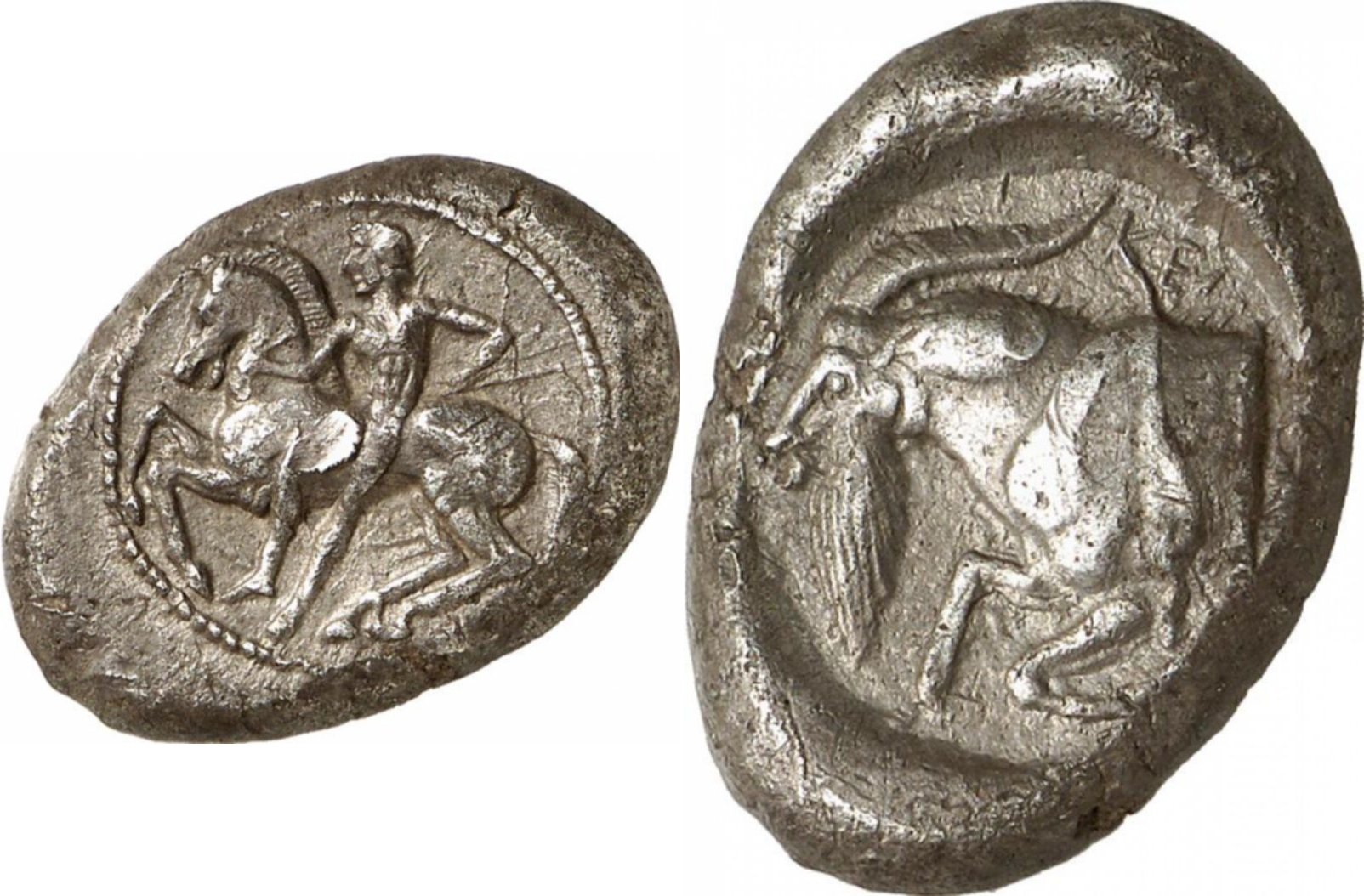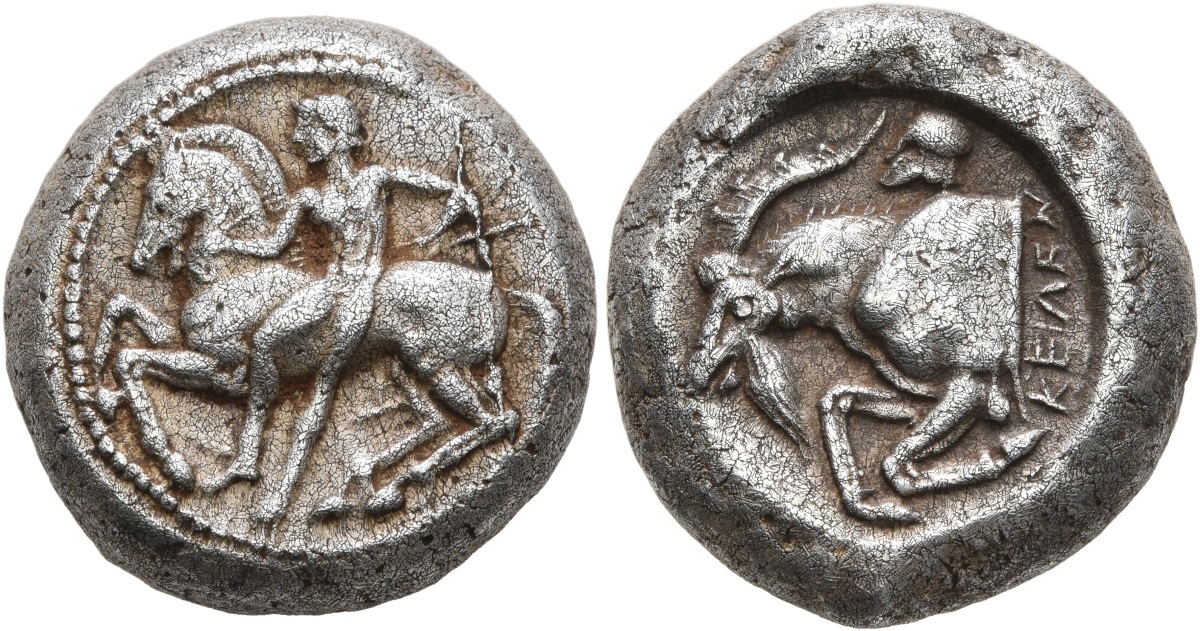| Type 1.1 | |
| Denomination: | AR Stater |
| Obverse: | Youthful nude rider, holding reins in right hand and whip in left, dismounting from horse rearing to left; dotted border. |
| Reverse: | Forepart of goat kneeling to left; above goat, KEΛ; all within circular incuse. |
| References: | SNG Levante, 17 = Baldwin’s Auctions Ltd, Auction 37 (4 May 2003), Lot 699 (acsearch.info URL); Gorny & Mosch Giessener Münzhandlung, Auction 169 (12 October 2008), Lot 133 (acsearch.info URL) |
| Die links: | Type 1.2 (obverse) |
| Credit: | Gorny & Mosch Giessener Münzhandlung (see the references above) |
| Remark: | Both cited specimens are from the same obverse and reverse dies. The obverse die is shared with Type 1.2. |
| Type 1.2 | |
| Denomination: | AR Stater |
| Obverse: | Youthful nude rider, holding reins in right hand and whip in left, dismounting from horse rearing to left; dotted border. | |
| Reverse: | Forepart of goat kneeling to left; on the right next to the goat, KEΛEN; above goat, Corinthian helmet to left; all within circular incuse. | |
| References: | SNG France 2, 43 = SNG Levante, 16; Leu Numismatik AG, Web Auction 25 (11 March 2023), Lot 910 (acsearch.info URL) | |
| Die links: | Type 1.1 (obverse) | |
| Credit: | Leu Numismatik AG (see the references above) | |
| Remarks: | (1) | Both cited specimens are from the same obverse die. This obverse die is shared with Type 1.1. |
| (2) | Both SNG Levante and SNG France 2 quote a coin published in Newell 1914 (pp. 11–12, No. 60, Pl. II.6) and in Kraay 1976 (p. 279, No. 1008, Pl. 58). However, this coin is obviously of a different type (probably Type 1.3 below), as it has a dotted border on the reverse and there is not enough space to the right of the goat or above it to place the legend. | |
| Type 1.3 | |
| Denomination: | AR Stater |
| Obverse: | Youthful rider, nude except for flying chlamys, holding reins in right hand and whip in left, dismounting from horse rearing to left; dotted border. | |
| Reverse: | Forepart of goat kneeling to left; dotted border; all within circular incuse. | |
| Variants: | a. | obv.: in exergue, KEΛEN |
| b. | obv.: anepigraphic (KEΛEN erased from the die in exergue) | |
| References: | a. | Nomos AG, Auction 21 (21 November 2020), Lot 221 (acsearch.info URL) |
| b. | Coll. P. Veselý, KEL-AR-05 and KEL-AR-16; Coll. American Numismatic Society, Identifier 1944.100.53201 | |
| Credit (see the references above): | ||
| a. | Nomos AG | |
| b. | P. Veselý (KEL-AR-05) | |
| Remarks: | (1) |
The depiction of the rider with the chlamys is unique to this coin type, no other Kelenderis coin types show this garment. The chlamys with two “wings” flying behind the rider’s back emphasizes the dynamics of the scene. Chlamys with the two “wings” is also depicted on some Thessalian coins from the 5th century BC (see Mack 2025, Forthcoming), and in the equestrian scene on an amphora originating probably from Kamiros in Rhodes, c. 525 –500 BC (The British Museum, 1867,0506.44), but the rider on the amphora is also wearing a short chiton. Note that on the Parthenon friezes some horsemen also have only chlamys and are otherwise naked (others wear a chiton only or both garments together, some also a cuirass), but the cloaks on these friezes are not divided into two “wings”. |
| (2) | In variant 1.3b, traces of the city ethnic are still visible in the exergue. For details, see the die analysis Kelenderis, Staters – Group 1. | |
16 July 2021 – 5 May 2025



